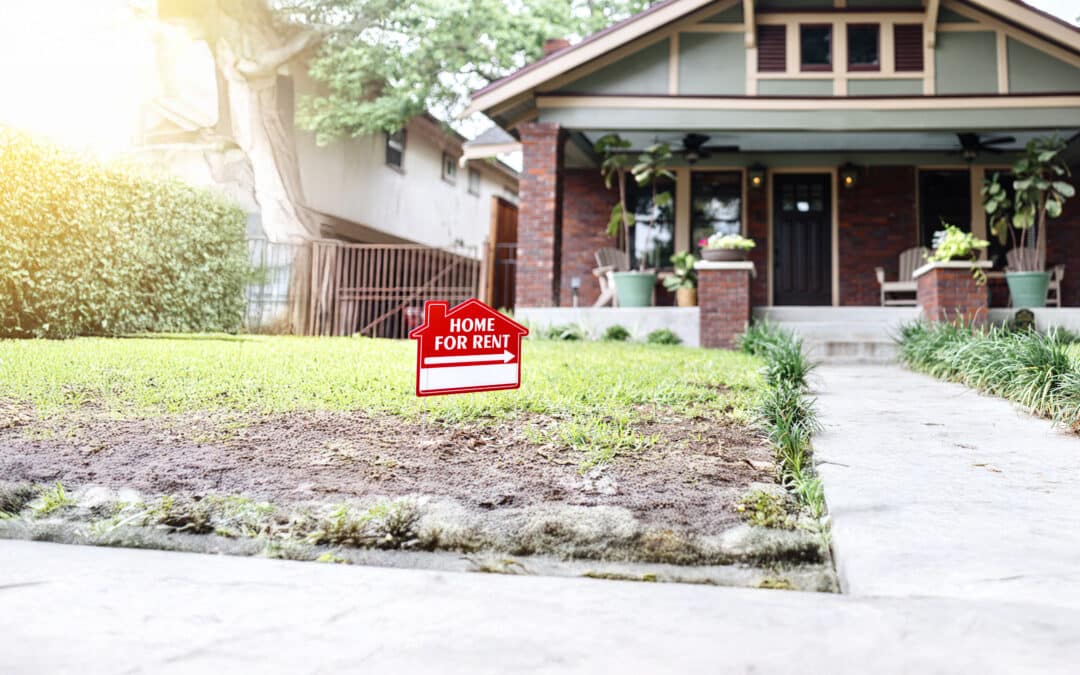RentRange, an industry leader in market data and analytics for the single-family rental (SFR) housing industry, found in its recent data report that the Raleigh-Cary, NC Metropolitan Statistical Area (Raleigh MSA) provides ample opportunities for real estate investors.
Job Growth
According to the Bureau of Labor Statistics (BLS) Job Report through December 2019, the Raleigh MSA has been surging in per-capita job growth.
The Raleigh MSA ranked #1 in annual job percentage gains with 3.7 percent growth between 2017 and 2018. Over the last five years, Raleigh ranks 10th amongst the 1M+ population metro areas, showing excellent job growth of 14.5 percent.
The Raleigh MSA has added 23,200 non-farm positions in the last year, a 3.7 percent increase. The MSA’s annual percentage increase continues to outperform the nearby Charlotte MSA’s 2.7 percent gain, the state of North Carolina’s two percent increase and the national average of 1.4 percent gain. In the last five years, the overall increase in non-farm payroll has added 83,500 jobs, a 14.5 percent increase, versus statewide 9.3 percent job growth.
The top job categories in the Raleigh MSA from December 2018 to December 2019 was led by the Professional and Business Services sector (6,600 jobs), followed by Leisure and Hospitality (5,600 jobs), Education and Health Services (2,700 jobs) and Trade, Transportation, and Utilities (2,600 jobs).

Raleigh Largest Job Category Growth
The Research Triangle area is home to many large tech companies such as Cisco, IBM, SAS, Lenovo, NetApp and Red Hat to name a few. It is also attracting many technology companies from other areas due to relatively low commercial and residential housing cost, favorable tax rates and talent coming from local universities such as UNC Chapel Hill, Duke and N.C. State.
The concentration of high-paying industries in the Raleigh MSA provides a median household income of just over $75,000 according to the 2018 ACS data, ranking the metro 35th in the country. This is also considerably above the statewide median household income of $53,855, and over the national median income of $63,688. Metro area incomes have enjoyed a four percent increase from 2017 ($72,297), and up showed a 14.3 percent increase over 2015 household income of $65,778.
According to the BLS unemployment report, the unemployment rate for the Raleigh MSA was a low 2.9 percent as of December 2019. That is lower than the national average of 3.5 percent, and down considerably from five years ago at 4.4 percent.
*All information stated in the Job Growth section is from the BLS Job Report.
Population
According to the 2018 Census ACS data, the Raleigh MSA hosts 1.36M residents. The metro added nearly 28,000 residents between 2017 and 2018, a two percent rise.
Between 2010 and 2018, Raleigh’s 19.8 percent population growth ranks as the third fastest growing metro area by percentage growth, following Austin, TX and Orlando, FL.
Net inward migration contributed to a 69 percent share of population growth.
Solid job growth in high-paying jobs with a reasonable cost of living continues to draw new residents to the area.
Rent and Home Price Metrics
The median home value in the Raleigh MSA was $285,000 in the last month of 2019, up 4.5 percent percent year-over-year. Home price appreciation has downshifted in the last year versus a five- year average of six percent growth, or 30 percent appreciation in the 5-year period.
Raleigh experienced approximately a nine percent drop from 2008 highs, hitting a low point in mid-2012 and recovering appreciation losses by early 2015. The 10-year overall home price appreciation is only slightly higher at 36 percent.
Home prices in nearby Charlotte are also up 30 percent from the pre-recession peak, but lost nearly double that of Raleigh during the cycle trough. However, Charlotte has appreciated a bit faster than Raleigh has in the last five years, gaining over 40 percent and recovering the larger loss from the recession.
As of December 2019, the average three-bedroom, single-family rental home in Raleigh is $1,490. Charlotte comes in $80 less at $1,410.

The one-year change for a three-bedroom detached SFR is up 3.3 percent, a $48 annual increase. In comparison, Winston-Salem is up 5.3 percent and Charlotte is up 6.5 percent for the last year. Over five years, SFR rentals in Raleigh have increased over 21 percent, Winston-Salem has increased 23 percent and Charlotte over 33 percent.
Given the proximity to the Research Triangle, there are many pockets of growth opportunity in the northern submarkets from Morrisville, North Raleigh up to Wake Forest having relatively low five-year rental increases of only 15 percent-20 percent. Additionally the aforementioned submarkets boast a low rent-to-income ratio of 18 percent to 22 percent.
The overall rent-to-income ratio of the Raleigh MSA is the eighth lowest versus other major MSAs at 23.8 percent, and notably lower than the national average of over 32 percent. This metric shows that rental rates in the Raleigh MSA are low for the income potential of the population, and accommodative versus the national average. Combined with a rapidly growing, well-paying job market is a positive signal to investors that rental prices have plenty of room to appreciate further, while maintaining affordability.
Comparatively, Charlotte’s lower median income produces a reasonable 27.3 percent rent-to-income ratio, while Winston-Salem is closer to the national average at 29.7 percent.
Three-bedroom SFR rates vary between $1,200 to $1,800 in the MSA, with central Raleigh submarkets showing the highest rental rates in the metro.

Saturation, Vacancy & Yields
The Raleigh MSA rental saturation for single-family properties (renter-occupied properties versus total) comes in at a relatively low 16.45 percent. Charlotte and Winston-Salem are higher at 18.25 percent and 19.85 percent, respectively. This indicates only a small number of SFR housing for renters, and still plenty of room for investors.
Demand is also high for SFR homes with a 5.9 percent vacancy rate and a slightly higher than average SFR rental listing duration of 28 days.
Gross rental yields (excluding expenses) for the Raleigh MSA ranks in the lowest quartile for major metros at 7.6 percent, while the national average among the top 100 markets is at 8.5 percent. There are a handful of zip codes with yields over 10 percent towards the southeast, lower yields are found in the Morrisville, Apex and Holly Springs areas to the west. Generally, these gross yield numbers show that home prices have outpaced rent increases, and rental rates could expand to increase yields.

Conclusions
The Raleigh MSA shows significant opportunity for SFR real estate investors.
The booming local economy will continue to expand, providing high-paying jobs and low unemployment for the foreseeable future. Favorable commercial prices, relatively low costs and taxes, ample local talent from nearby universities and affordable housing should continue to drive new businesses and residents to the area. These factors will continue to support strong demand on real estate in the area.
Low rent-to-income ratios show the market is currently very affordable and has room to support above-average property value and rent price appreciation.
Home values and rental prices have appreciated steadily over the last few years, but the measured increases and current relative affordability indicate a stable market, which should retain its value well.























0 Comments